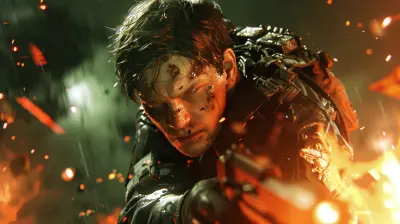The Rise and Fall of Arcade Gaming Culture
7 August 2025
Arcades. Just saying the word triggers a wave of nostalgia, right? If you grew up in the '70s, '80s, or even the early '90s, you probably remember the neon lights, the clinking of quarters, the smell of overly buttered popcorn, and the frantic button-mashing that echoed through crowded gaming halls. It was more than just a way to kill time—it was a full-blown lifestyle.
But what happened? How did something that once ruled the gaming world fall into obscurity so fast?
Let’s take a deep dive into the electrifying history of arcade gaming culture—how it rose to power and why it eventually came crashing down.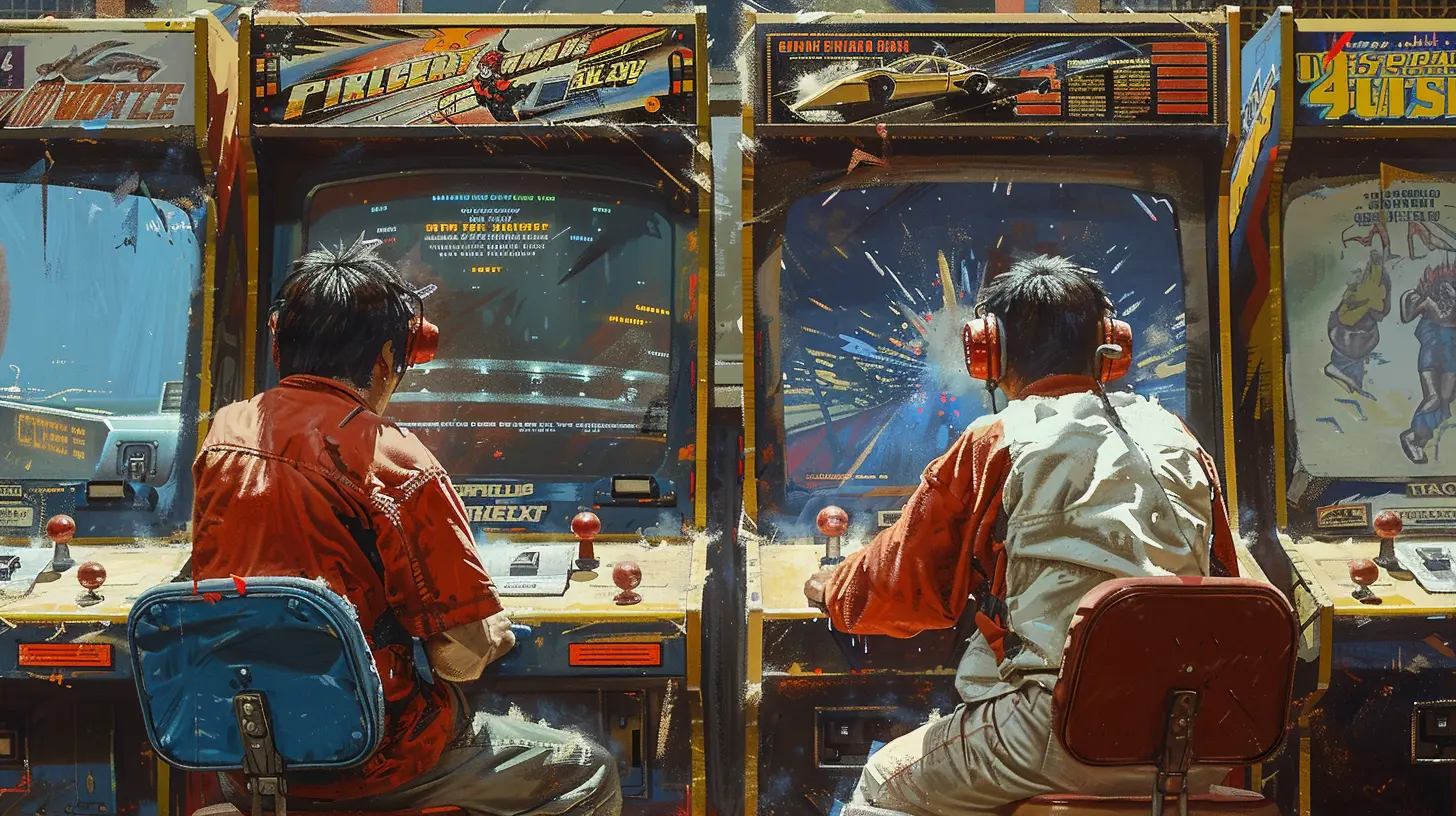
🎮 The Origin: From Pinball to Pixel Kings
Before Pac-Man started chomping dots or Street Fighter fighters threw devastating hadoukens, arcades were all about pinball machines. These mechanical marvels were the kings of entertainment in the early 20th century. From smoky bowling alleys to classic diners, pinball was everywhere.But things shifted in the early ‘70s. Thanks to the advent of video technology and the rise of microprocessors, games suddenly became more interactive, immersive, and just better. Cue the birth of video arcades.
In 1971, a game called Computer Space laid the groundwork for what was to come. It was clunky and hard to play, but it was the first coin-operated game ever. And then came Atari with Pong in 1972—and boom! The world noticed.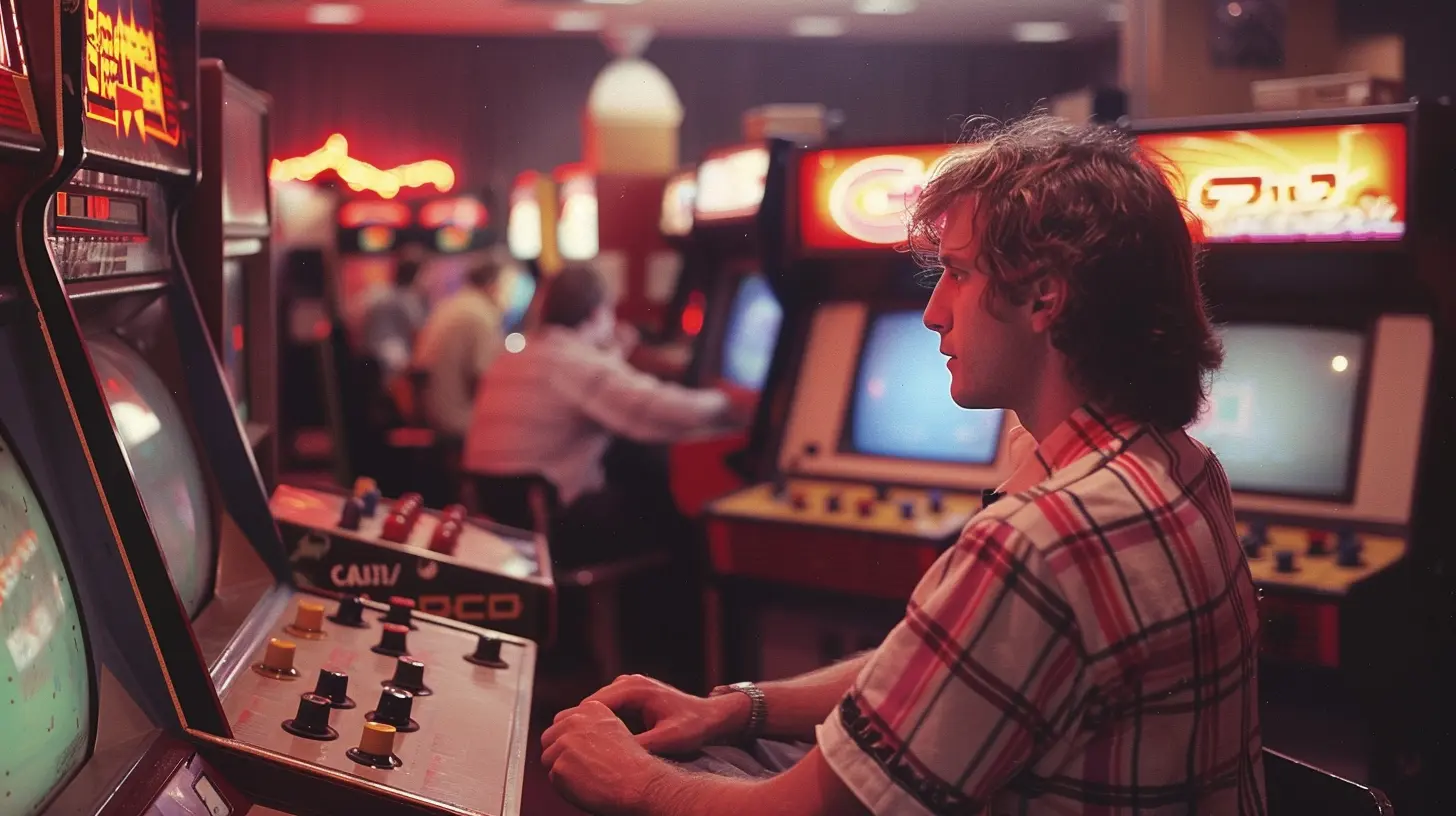
🕹️ The Golden Age (Late '70s to Mid '80s)
This was it. The time when arcade gaming was king of the entertainment world. We're talking about the glory years, the golden age, the era when:- Pac-Man had kids dreaming about ghosts named Blinky and Clyde
- Donkey Kong made a plumber named Mario a household name
- Galaga made shooting aliens insanely addictive
- Asteroids and Space Invaders forever changed sci-fi gaming
Arcades popped up on every corner like mushrooms after rain. Malls had them, pizza places had them, even gas stations had one tucked away in the back. Suddenly, gaming wasn’t just for nerdy kids or tech geeks—it was mainstream.
Want to know the real magic? People actually stood in lines just to play for a few minutes. Imagine doing that today! Players swapped tips, cheered each other on, and even became local celebrities. High scores weren’t just numbers; they were badges of honor.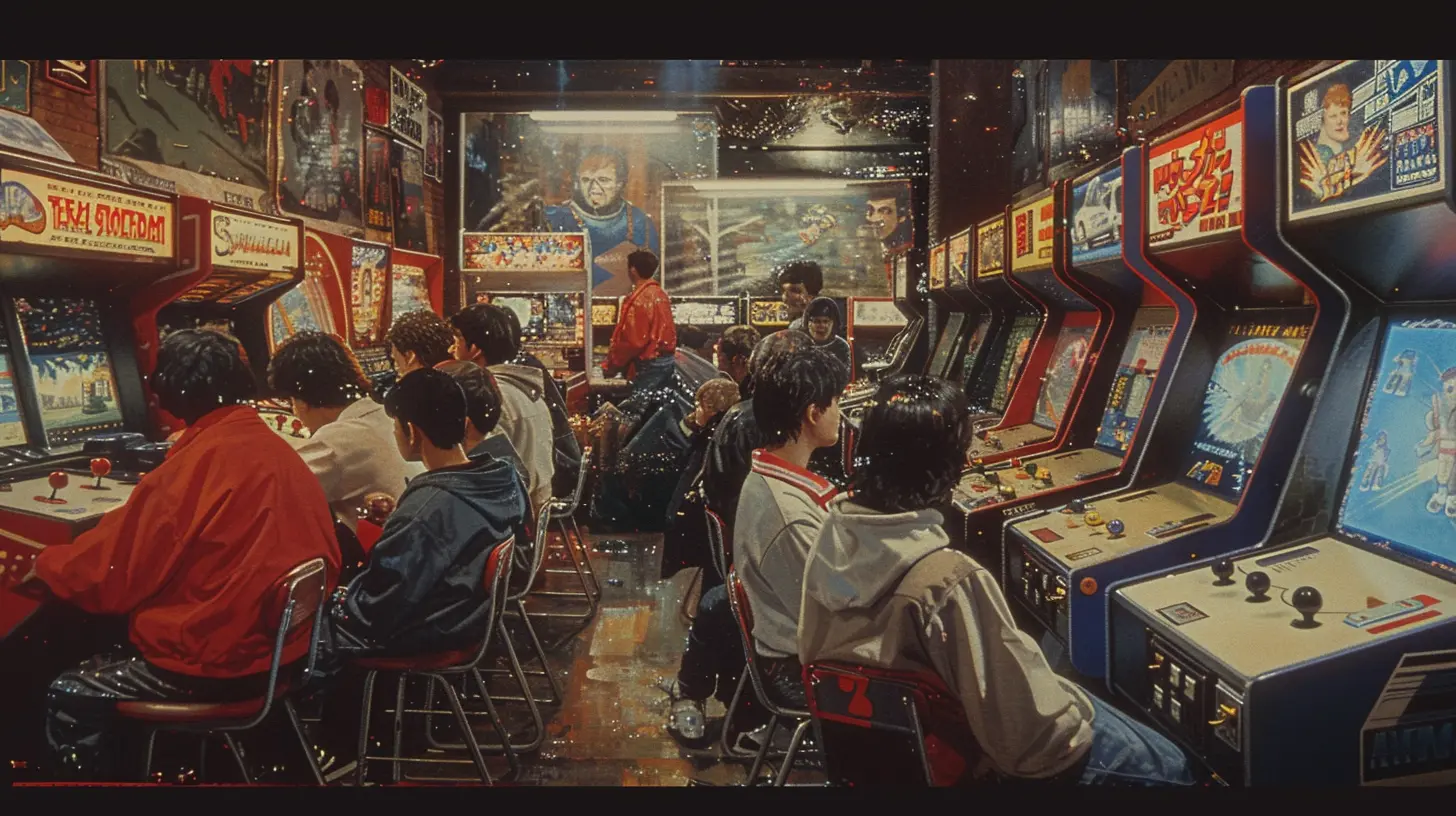
👾 Arcades as Social Hubs
Arcades weren’t just about gaming—they were the ultimate hangout spots. It was a place where friendships were formed, rivalries were born, and first crushes happened over shared tokens and soda.Unlike today’s online lobbies filled with toxic chat and laggy connections, arcades brought people together in the real world. You’d gather around a cabinet, admire the skills of a local champ, and learn from the masters. There was human energy there, something you just don’t feel behind a screen alone at home.
The culture was alive. There were tournaments, high score boards, and even magazines celebrating arcade warriors. It wasn’t just a game—it was a movement.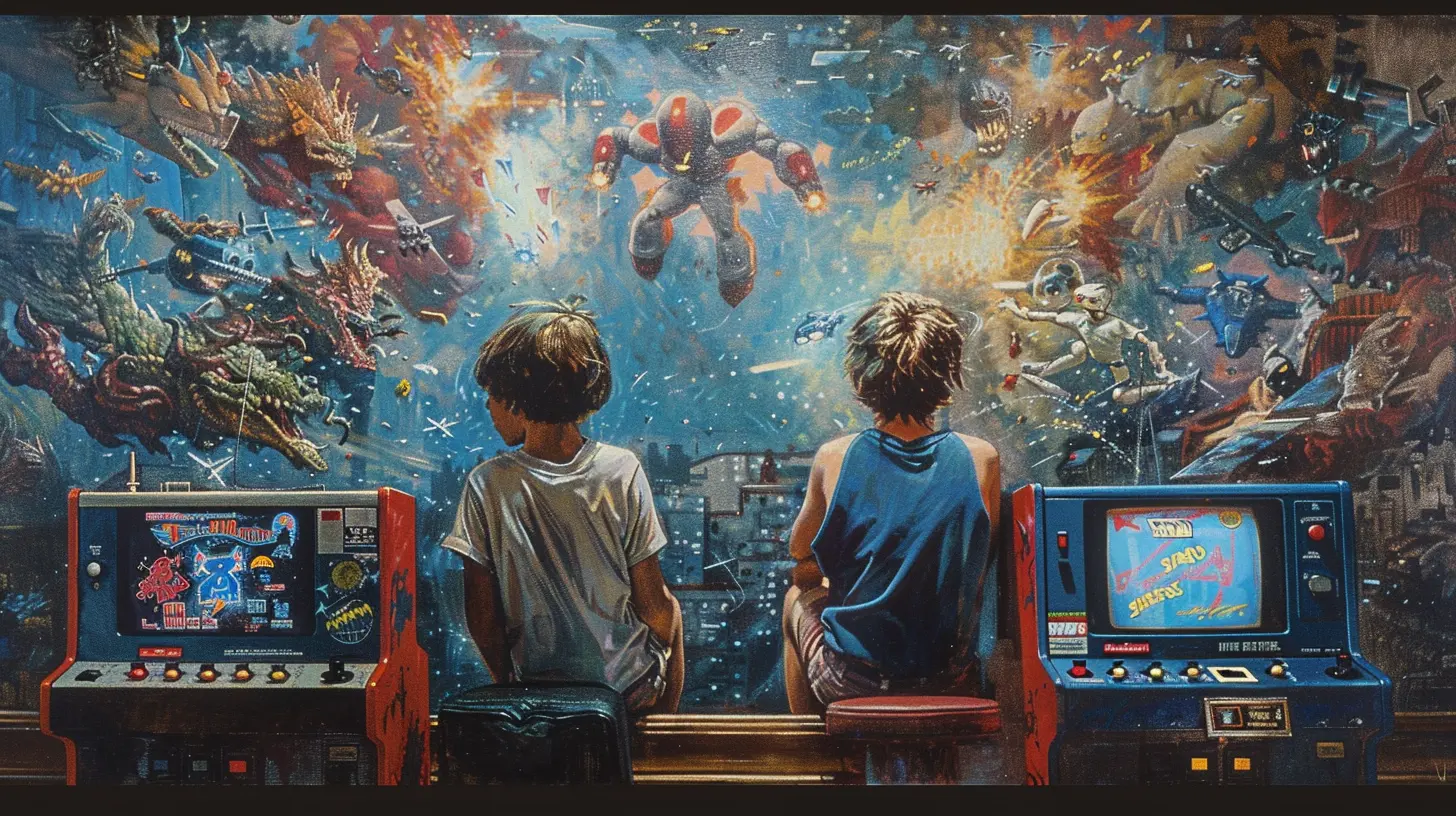
🏆 The Peak: Arcades Go Global
By the early ‘80s, the arcade industry was a billion-dollar beast. In 1981 alone, games like Donkey Kong and Defender pulled in more money than any Hollywood movie that year. Yep, arcades were officially bigger than blockbusters.Game developers were pushing boundaries, cabinets were getting fancier, and new genres (fighters, racing, light-gun shooters) were exploding into the scene. It wasn’t just a trend anymore—arcade gaming was its own ecosystem, constantly evolving and mesmerizing.
💸 The Fall Begins: The Crash of '83
But then…the crash came.In 1983, the gaming industry as a whole took a nosedive. Oversaturation was a big culprit. Everyone wanted to jump on the arcade bandwagon, leading to way too many low-quality games and knockoffs flooding the market.
Let’s be real—how many versions of Pac-Man clones do we really need?
Gamers were getting bored. Operators were losing money. And home consoles were starting to sneak into the picture...
📺 Enter the Home Console Era
It’s hard to pinpoint an exact moment when arcades started losing traction, but the rise of home consoles played a massive role.With the launch of the Nintendo Entertainment System (NES) in 1985, people could suddenly play arcade-quality games from their couch. No coins, no lines, no curfews. Just turn on the TV, pick up a controller, and dive in.
This was a game-changer—literally.
Then came Sega Genesis, Super Nintendo, PlayStation, and the whole console revolution. Games started offering stories, save points, multiplayer modes, and deep storylines—experiences arcades couldn’t replicate.
Before long, walking into an arcade started to feel… quaint.
🥋 One Last Stand: The 90s Fighting Game Boom
But arcades weren’t done yet.In the early ‘90s, arcade gaming made one final glorious stand—with fighting games. Titles like Street Fighter II, Mortal Kombat, and Tekken brought players back in droves. The thrill of beating your friend (or some stranger) face-to-face in a best-of-three match? Unreal.
This was the last gasp of arcade dominance. Gamers would line up quarters on the machine to “call next.” Crowds would roar as someone pulled off a last-second combo or a fatality. It was raw, real, and exhilarating.
But even those glory days didn’t last. With console ports getting better and better, and the internet making online multiplayer a thing—why bother going out?
🏚️ The Decline: From Hotspots to Ghost Towns
By the late '90s and early 2000s, arcades were vanishing like smoke in the wind. Factors that contributed to the decline:- Home Consoles kept improving and offered convenience
- Rising Costs of maintaining bulky arcade machines
- Online Gaming allowed friends to play globally from home
- Changing Social Habits (let's face it, people just stopped gathering like they used to)
Arcade halls closed. Cabinet machines got sold off or scrapped. The neon lights dimmed, and another relic of analog youth faded away.
🧠 The Legacy Lives On
But here’s the thing—arcade culture never truly died. It just evolved.You’ll still find arcades in certain parts of Japan, where gaming culture is still king. In the West, retro bars, gaming cafés, and arcade museums are popping up all over. They mix nostalgia with modern convenience—craft beer in one hand, joystick in the other.
Games like Pac-Man, Street Fighter, and Metal Slug continue to live on in collections, ports, and retro consoles. Some indie developers are even bringing the arcade spirit back with deliberately designed “arcade-style” games.
Even big companies like Nintendo and Capcom tip their hats to arcade roots more often than not.
🎉 Why We Still Love Arcade Culture
So why, after all this time, do we still feel something when we think about arcade games?Because it reminds us of...
- Simpler times when gameplay ruled over graphics
- Social experiences that didn’t require headsets or usernames
- The magic of mastering a game where every token counted
- Tangible experiences where your victory was seen and felt
Arcades weren’t just about games. They were arenas. They were stories. They were a way for kids, teens, and even adults to connect over competition and pure fun.
And for many of us, they’ll always hold a special place in our hearts.
🚀 The Future of Arcades?
Now, before you put the final nail in the arcade coffin, hold up.There’s a small but mighty revival happening. Call it "Arcade 2.0" if you want. VR arcades, e-sports lounges, retro bars, and mobile pop-up arcades are testing new waters. These spots combine the old-school feel of arcade gaming with modern tech and sensibilities.
Could this be a second wind? Maybe.
One thing’s for sure—arcade culture isn't entirely gone. It’s just adapting like every good game player does when the boss fight gets tough.
🧡 Final Thoughts
The rise and fall of arcade gaming culture is more than just a history lesson—it’s a tribute to a time when gaming was raw, communal, and electrifying. From pixel-perfect reflexes to quarters lined up on a cabinet, it was as real and gritty as it gets.And while arcades may no longer be the powerhouses they once were, their influence is still here—in every fighting game, co-op mode, and couch multiplayer experience we have today.
So next time you see a dusty old Galaga in a corner of a pizza joint or a slick Time Crisis setup at a retro bar—drop a coin in. Play a round. Feel that nostalgia hit you right in the chest.
Because arcade culture? It’s never truly game over.
all images in this post were generated using AI tools
Category:
Gaming HistoryAuthor:

Madeleine McCaffrey
Discussion
rate this article
2 comments
Edith Mahoney
Embrace the nostalgia; arcade games will always inspire!
November 17, 2025 at 3:55 AM

Madeleine McCaffrey
Absolutely! Arcade games captured a unique spirit of community and creativity that continues to inspire new generations.
Celeste Willis
This article brilliantly captures the nostalgia and evolution of arcade gaming culture. It highlights how technology transformed gaming experiences while also reflecting on the community's vibrant yet fleeting nature. Great read!
August 7, 2025 at 4:49 AM

Madeleine McCaffrey
Thank you for your kind words! I'm glad the article resonated with you and captured the essence of arcade gaming culture.

